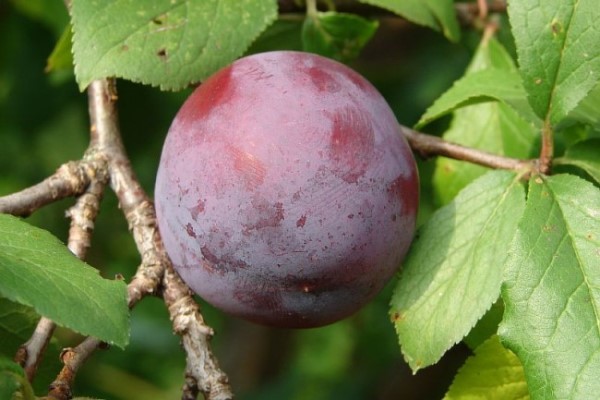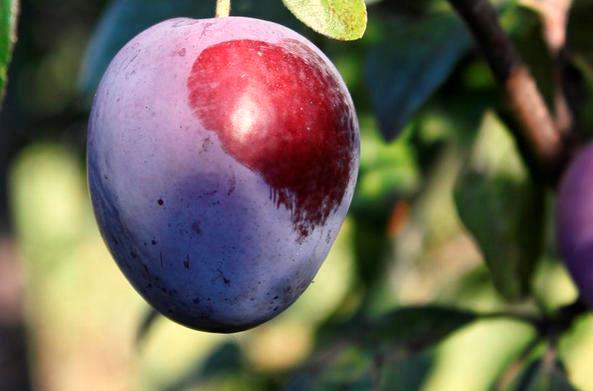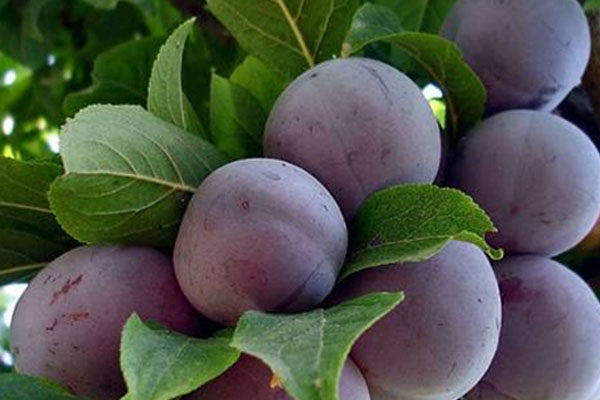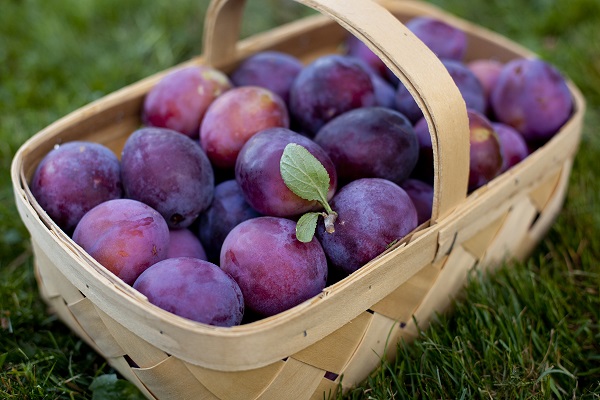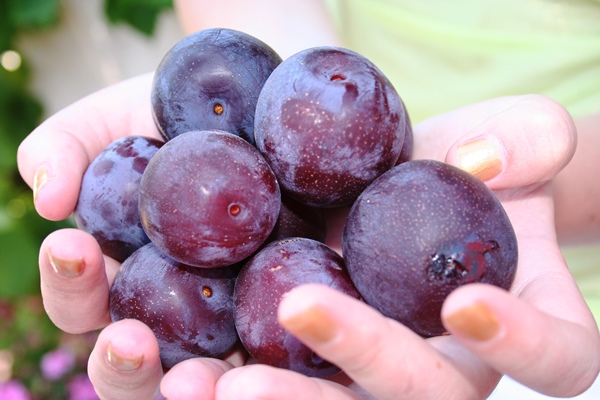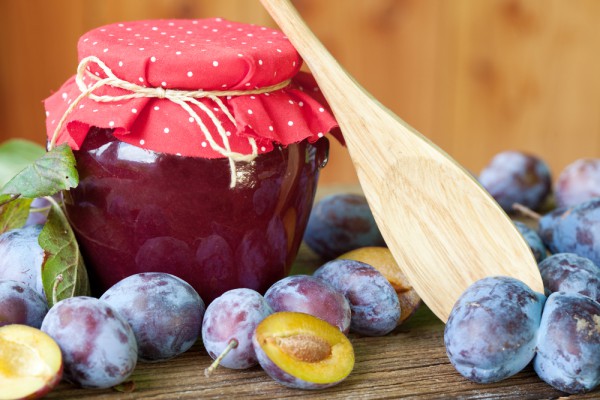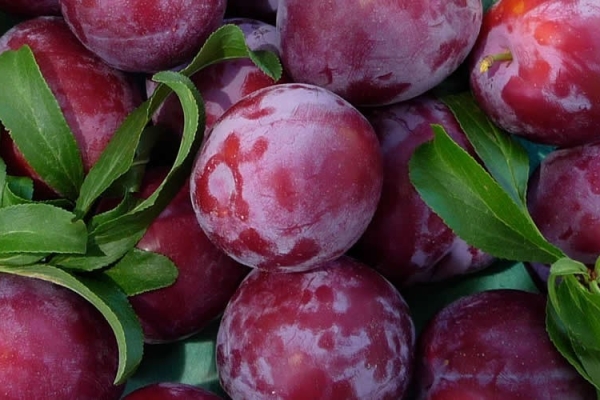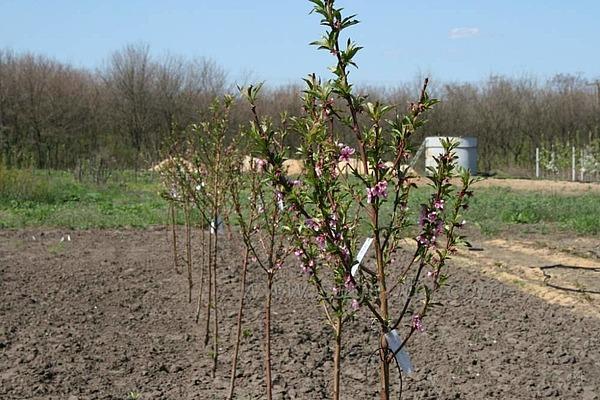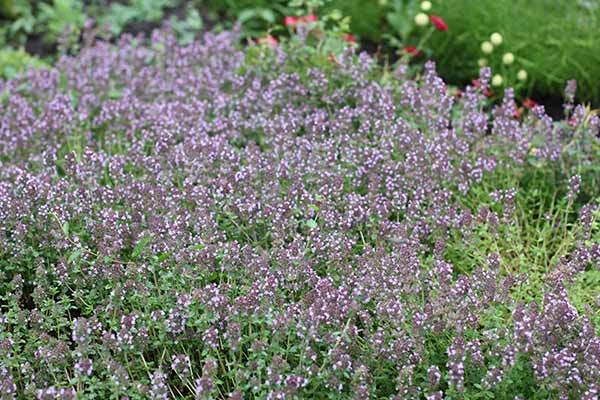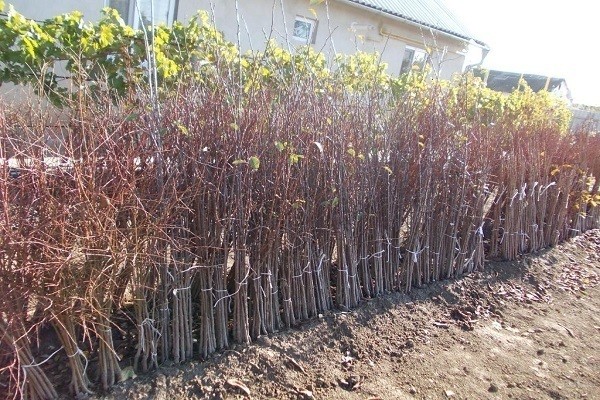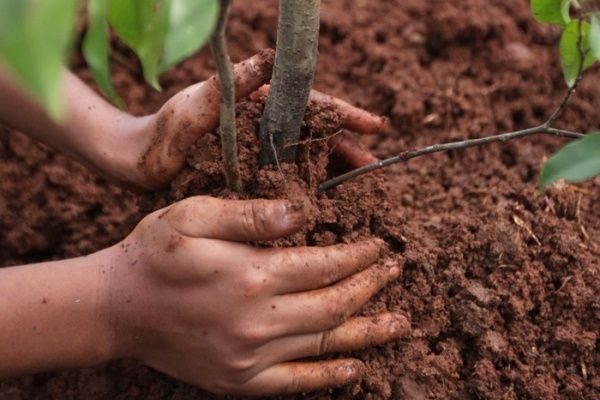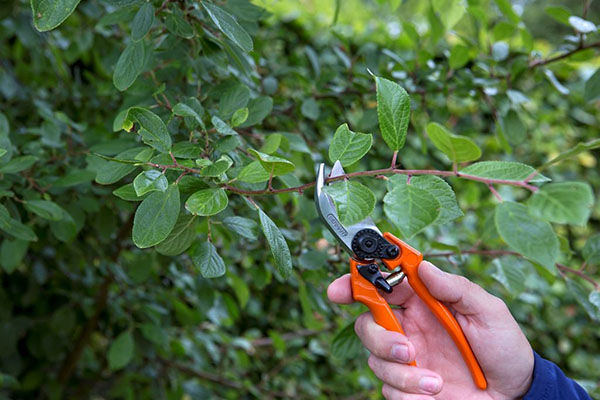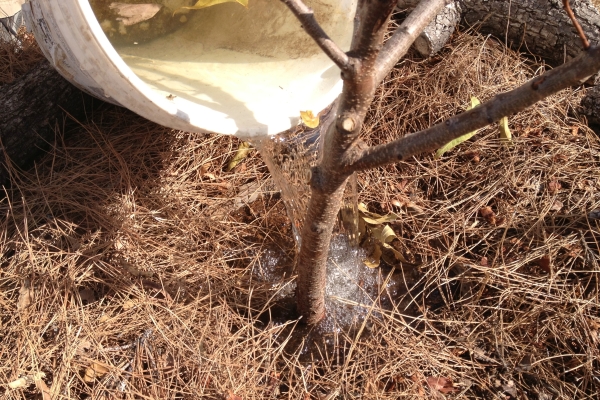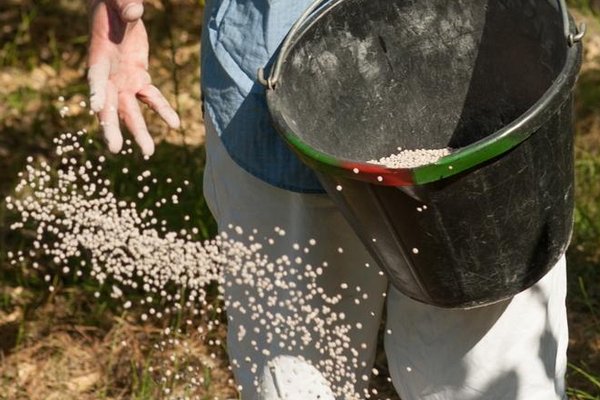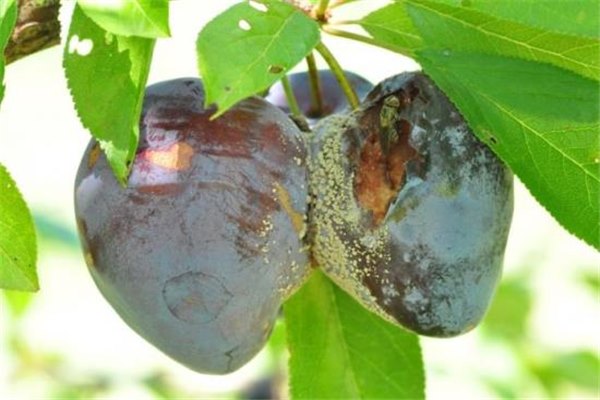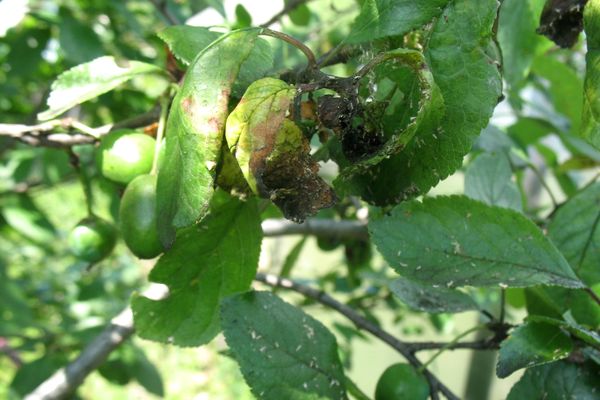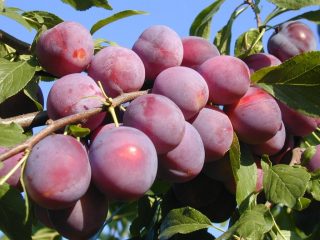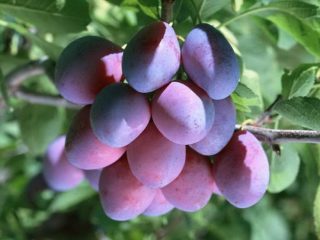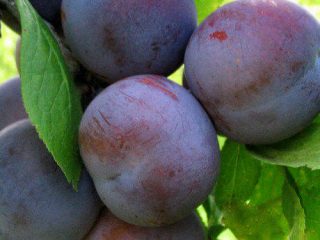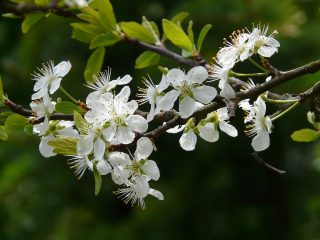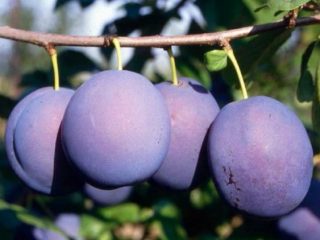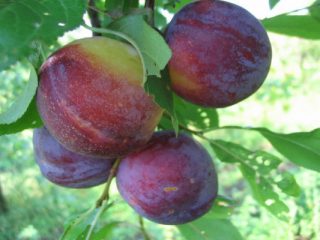Content
Plum "Eurasia 21" is an early-ripening interspecific hybrid variety. It has a lot of distinctive features, for example, good frost resistance and excellent taste. Due to this, it is popular among gardeners.
History of variety selection
The homemade plum “Eurasia 21” appeared after the hybridization of the “Lacrescent” variety, which was bred by Professor Alderman from America. To form the plant, genotypes of East Asian, American and Chinese plums, as well as the Simona, cherry plum and domestic plum varieties were used. The experiments were carried out at the Voronezh State Agrarian University by scientists Venyaminov and Turovtsev. In 1986, the variety they bred was included in the State Register.
Description of the plum variety Eurasia 21
The plum variety "Eurasia 21" has its own characteristics, namely the fruit, the shape of the tree and the regions for cultivation.
So, the height of the Eurasia plum tree reaches 5-6 m in height.The crown is small and not very thick, the bark is gray-brown. The green leaves have an elongated shape, they are large, with a pointed tip and small teeth.
The plums of this variety have a round shape, weighing 35 g. They seem to be covered with wax and have a blue-burgundy color. The pulp of the “Eurasia 21” fruits is bright yellow with a sweet and sour taste. It is juicy, meaty and flavorful. The skin is thin, the stone is medium, and it is difficult to separate it from the pulp.
According to research, the pulp of the fruits of this variety contains:
- 7% acids;
- 7% sugar;
- 6% dry ingredients.
The “Eurasia” plum is suitable for the north-west of Karelia, the Moscow region and the Leningrad region.
Characteristics of the variety
The popularity of the plum variety "Eurasia 21" is growing due to its properties.
Drought resistance, frost resistance
The variety is not drought resistant. Trees need timely watering, otherwise the leaves will turn yellow and the fruits will begin to fall off.
Frost resistance, on the contrary, is high; this characteristic of the “Eurasia” plum variety is one of its most important advantages. The plant can easily withstand temperatures down to -20°C. Other varieties lose their properties already at -10.
Plum pollinators Eurasia
Plum is a self-sterile variety, so there is a need for cross-pollination. The best pollinator for plum “Eurasia” is the variety “Pamyat Timiryazev”, Mayak, Renklod Kolkhozny. Other pollinators of the plum “Eurasia 21” are the Golden Fleece and Volga beauty.
If desired, you can use special mixtures of several types of pollen.
Productivity and fruiting
The first harvest of plum variety “Eurasia 21” can be harvested 4 years after planting. The fruits usually ripen in early August. Their number depends on the age of the tree. From a young plant you can collect about 20 kg of plums. From eight years old and older about 50 kg. The record figure was 100 kg.
It is better to store a large harvest in boxes or baskets. In this case, the air temperature should be no more than 1°C, and humidity up to 80%.
Area of application of berries
Eurasia 21 plums can be eaten fresh. They are also suitable for preparing various dishes. It can be jam, jam, puree, juice. Sometimes the fruits are frozen for the winter, but in this case they lose their taste and become sour.
Resistance to diseases and pests
Eurasia 21 has an average level of resistance to various diseases and pests, so it requires feeding.
Advantages and disadvantages of the variety
The variety has advantages.
- Fertility and productivity. Under favorable weather conditions and proper care, you can harvest 50 or more kg of fruit.
- Frost resistance of plum "Eurasia".
- The variety's resistance to certain diseases and insects.
- Excellent taste of plums and their size.
- The fruits can be stored for a long time without losing their properties.
- Precociousness.
Eurasia 21 also has a number of disadvantages:
- the tree is too tall.
- the need to plant pollinating plants on the site.
- The branches grow quickly, which requires frequent pruning.
- Unfortunately, the plum "Eurasia 21" is susceptible to clasterosporia, fruit rot, codling moth and aphids.
- loose pulp is unsuitable for preparing some dishes.
Despite its shortcomings, this plum variety is popular among gardeners.
Planting and caring for plum Eurasia
Proper planting of seedlings and subsequent care of growing trees is the key to their health and a bountiful harvest.
Recommended timing
The best time to plant the Eurasia 21 plum is early spring. Most often it is planted in April, when the likelihood of frost is reduced to zero. Over the summer, the seedlings will develop a strong root system and they will have time to adapt to new conditions.
It is better for gardeners in the southern regions to plant a tree in the fall.
Choosing a suitable location
It is recommended to choose the southern or southeastern part of the garden. The site should have a lot of light and sun, the ideal option is a slight elevation. If possible, the tree should be protected from the wind from the north with a fence.
What crops can or cannot be planted nearby?
The following cannot be grown next to a plum tree:
- Walnut;
- hazelnut;
- fir;
- birch;
- poplar;
- pear.
The proximity to an apple tree, black currant and various flowers, such as tulips and daffodils, is considered favorable. You can plant thyme next to Eurasia 21.
It grows quickly, covering the ground with a “carpet”. At the same time, weed there is no chance left.
Selection and preparation of planting material
It is better to buy plum seedlings "Eurasia" in specialized nurseries or from trusted gardeners.It is advisable that they have a certificate of variety and age information.
Seedlings must be grafted. The grafting site is easy to determine; it is usually located just above the root collar. There the trunk is thickened and slightly curved.
You need to choose seedlings up to 2 years old, no more than 1.5 m high, a trunk thickness of about 1.3 cm and 3-4 branches. They should have several roots (4-5 pieces), each up to 30 cm long. It is important that there is no damage or any growths on the tree or roots.
Three-year-old seedlings should not be taken, since it is more difficult for them to take root in new conditions.
Eurasia plums purchased at the end of autumn must be hidden in a previously dug and shallow ditch. Cover the root system and trunk (approximately a third part) with soil. Place spruce branches on top, which will protect the seedlings from rodents.
Landing algorithm
Planting the plum tree “Eurasia 21” takes place in several stages.
- In autumn, dig a hole 90 cm deep and 80 cm in diameter.
- Fertilize the soil using a mixture of several types of products. These are humus, superphosphate, potassium sulfate and lime.
- With the onset of spring, fertilize the soil again. This time you will need 2 buckets of compost, 30 g of urea and 250 g of ash.
- Loosen the soil. Make a small mound at the bottom of the hole.
- Bury a wooden stake and a seedling.
- Fill with soil, humus or peat so that the root collar is 3-5 cm above the ground.
- Securely attach the plum to the support.
- Pour 20-30 liters of clean water.
- Measure a distance of 60-70 cm from the ground. Trim everything above this level.
The last stage of planting “Eurasia” is mulching. The ground around the seedling must be covered with peat or humus.
Aftercare for plums
The fertility and productivity of a tree of this variety directly depends on proper care. It includes several activities:
- timely pruning;
- watering;
- feeding;
- preparation for winter;
- protection from rodents.
Equally important is the fight against various diseases and pests.
The description of the plum "Eurasia" reports the intensive growth of its branches. That is why the crown needs pruning from time to time.
It comes in several types.
- The branches should be pruned for the first time in September. The main trunk of the plum tree should be shortened by 2/3, and the side shoots by 1/3. This will help to form a beautiful crown in the future.
- Summer pruning involves shortening the shoots by 20 cm.
- In autumn and winter, it is necessary to remove old branches, as well as those damaged by insects and diseases.
Lack of moisture negatively affects the health of the plum variety "Eurasia 21", so special attention should be paid to watering the tree. But don’t get too carried away, because excess moisture leads to yellowing of the leaves and death of young shoots.
The frequency of watering and the amount of water directly depends on the age of the plant and precipitation:
- young people need 40 liters of water once every 10 days;
- adults 60 l once every 14 days.
The wet soil around the trunk must be loosened every time.
Fertilizing should be carried out starting from 3 years after planting the seedling. Until this time, the fertilizers placed in the pit will be enough for him.
“Eurasia” is fed 4 times a year:
- Before the plum blossoms, you need to fertilize the soil with 1 tbsp. l. ammonium nitrate;
- during flowering you will need 10 liters of water, 2 tbsp. l. potassium sulfate, 2 tbsp. l. urea;
- when setting fruits for feeding, you need to take 10 liters of water and 3 tbsp. l. nitroammophoska;
- after harvesting, add 3 tbsp to the soil. l. superphosphate.
All fertilizers are designed for 1 m2.
Due to its good frost resistance, the plum variety “Eurasia 21” does not require special preparations for cold weather. But some actions are still worth taking:
- remove dead bark and moss;
- Apply a mixture consisting of water, copper sulfate, lime and wood glue to the cleaned areas of the trunk;
- wrap the barrel with paper or burlap.
The Eurasia 21 plum will be protected from rodents by spruce branches, a polymer mesh and a piece of fabric soaked in turpentine or mint oil.
Diseases and pests, control and prevention measures
Trees of the “Eurasia” variety most often suffer from clasterosporiasis and moniliosis.
- In the first case, treatment consists of treating the plum with a solution of copper oxychloride (30 g per bucket of water). Each plant uses 2 liters. Treatment is carried out immediately after flowering. For prevention, it is necessary to remove fallen leaves, prune the tree in a timely manner and do not forget about killing weeds.
- When moniliosis occurs, the plant should be sprayed with a lime solution (2 kg per bucket of water). This is done in March and October. After harvesting, the branches and trunk must be treated with a solution of copper sulfate (10 g per bucket of water). For prevention in the fall, you need to remove mummified plums from the branches.
Of the pests, the most dangerous to this variety are the plum sawfly, aphids and codling moths.
| Pest | Treatment | Preventive measures |
| Plum sawfly | Before and after flowering, treat the plum with Karbofos | In the fall, dig up the soil around the tree, thereby destroying the larvae that have prepared for wintering |
| Aphid | At the time when the buds are forming, it is necessary to treat the tree with Benzophosphate (60 g per bucket of water) or Karbofos (according to the instructions) | Remove fallen leaves in a timely manner
|
| codling moth | After the flowering period has passed, spray the plum with Kimis, Karbofos or Fufanon. | Collect fruits and loosen the soil at the right time |
The plum variety "Eurasia" has a lot of useful qualities and properties. This is not only high productivity and fertility, but also resistance to low temperatures. To this you can add excellent taste and long-term storage of fruits.
